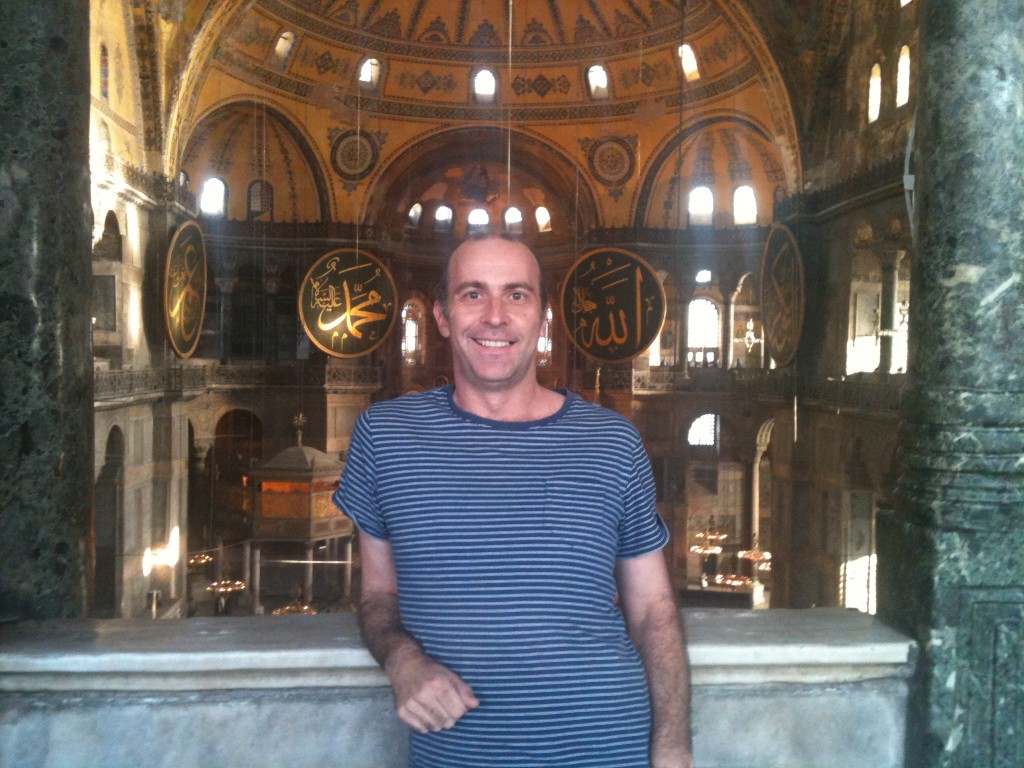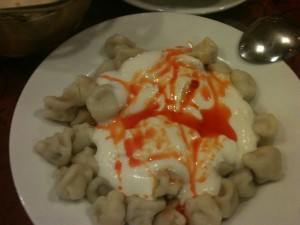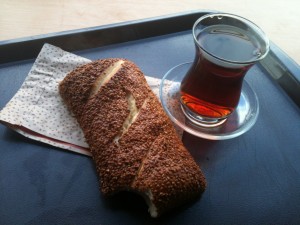For the last few years, every year a friend of mine, Paul and I, have an extended long weekend in a new city. The rule is that the city must be new for both of us. i.e. we have never been to that city before. As a result we have been to Reykjavik (iceland), Madrid (Spain), Berlin (Germany), and Southampton, UK. We usually travel sans partners and use the time to explore, catch up and eat!
This year we chose Istanbul, an immense metropolis of 13 million people which has been home to people for almost 7000 years. Istanbul was the 173rd city of over 100 000 I have ever visited.
Aesthetics 8 out of 10
Istanbul is not a beautiful city but it definitely makes an impact! Houses of many ages jostle on the hillsides seemingly tumbled together. Minarets, towers and chimneys punctuate the skyline. The Bosphorus and Golden Horn waters provide a space for travel and commerce stretching over 5000 years.
Liveability: 6 out of 10
The greater Istanbul area has a population of between 12 and 19 million people .
The Mercer Quality of living index placed Istanbul as 114th in the world. The Global Liveability Survey ranked Istanbul last year as 109th in terms of liveability. Readers of the Financial Times, however, chose Istanbul in 2011 as the most liveable city in the world. The review said: “İstanbul is cosmopolitan, busy, young in its population but historic in its fabric, socially mixed with a huge disparity of income, accessible and a city that has always built on its status as a bridge between not just continents but civilizations, ideas, religions and peoples” .
While, Istanbul would be a fascinating place to live, I got the impression its not that easy. Huge Urban population growth creates pressure for infrastructure.
An average annual salary is $US35,000.
The Big Mac index says that at July, 2012, a McDonald’s big Mac is $US3.54, about the same as an hour’s wage. The theory goes onto suggest that the Turkish Lire is undervalued. Restaurant meals set me back $US8 to $US20. A takeaway doner Kebab from a local food stand cost around $US4 to $6 including drink. International Fast food chains are more expensive. A cup of Coffee around $US1.80.
Temperatures drop to -4c (25F) in January and climb to 26.5C (80F) in July. Humidity is very high. According to an World Bank, İstanbul is the seventh most polluted city in the world Of concern also is that a 7.6 plus magnitude earthquake has a 60 per cent chance of striking before 2030. And many of the structures I saw throughout the city looked very flimsy.
Turkeyis the 58th least corrupt country in the world.
Culture: 9 out of 10
3000 years of history mean the museums, galleries, monuments, and landscape mean Turkish culture is very rich. Think religion, sport, music film and food. We ate like sultans, enjoying 3 course meals for $10 each.Turkish food is of course is way more than kebabs. We munched through:
- Borek- baked or fried filled pastries made from a thin flaky dough known as phyllo, filled with cheese
- Manti-a Turkish ravioli served with yoghurt
- Chai, coffee, cherry and pomegranate juices,
- Pastries of every kind
- Rice puddings
- Dondurma -a thick incredibly tasty ice cream
Service in restaurants was gracious and welcoming. Menu Prices can vary. In the parts of the city where the menus were in Turkish or even in Turkish with an English translation, expect to pay a third of what you pay in the parts of town where the restaurant signs and menus are almost exclusively in English.
Crime 9 out of 10
The crime rate is half that of London. – and London’s crime rate is low. I didn’t see much evidence of pickpocketing activity and I usually spot that. There is a salutary story that every one is told of the tourist who makes friends with a local, gets taken to a pub owned by a relative of that “friend”, and after a couple of drinks being made to settle an obscenely high bar bill of $1000. We decided that the story is apocryphally We did meet men who wanted to entice us to places with promises of cheap beer and nice girls but we deiced they were probably fairly harmless – in it for a commission. I may be wrong in this but so many urban myths grow up in places. The aforementioned men were an irritation but a stern “no thank you”, usually dislodged them .
This also worked for the shopkeepers and restauranteurs who wanted you to come in. In most cases, this worked. We did see one poor Korean woman being almost chased along the street by a guy who wanted to drag her to a carpet shop. Our rule was if there were no locals in the shop or restaurant, we would not go in. We found all of the shopkeepers we dealt with to be scrupulously honest.
Begging was rare.
Transit 7.5 out of 10
Like many cities in the world Istanbul was guilty of underfunding public transit in the 60 s, in favour of the private car. The extensive tramway system the city had was shut down in the 1960s. This public direction has seen some reversal in the last few years with the reinstatement of trams, and opening of new transit options such as the Taksim funicular which looks like the ride out of Total Recall. I kept expecting the gravity to shift half way through the gentle descent. Tram 1 was an incredible useful ride linking the key tourist sites together. The city has a very large (and busy) bus way which links the Asian and European sides of the city.
To use the system, we bought an Istanbul Card , a stored value transit card. It costs 6 Turkish Lire ($US3.34) for the refundable deposit plus whatever you add to it. The Card distributors are labelled AKBIL and can be found at magazine, juice or snack stands. They cannot be bought in stations. It was easier to have the one card than be fumbling for tokens each ride.
Vibe: 10 out 10
There is an atmosphere in Istanbul that is addictive. The city pulsates with life 24/7! It does mean it can be noisy 24/7 so choose a quiet hotel!
The Verdict: 85%
I ranked Istanbul at 21st on my list of top cities. Any city that makes my top 40, I believe is world class.
Top Twelve Sights for Istanbul (I could not reduce it to ten)
- Hagia Sophia This It is a stunning, stunning ancient building has survived earthquakes, wars, riots and outlasted several civilisations. It was dedicated in 360AD as an Eastern Orthodox Cathedral. In fact it was the world’s largest cathedral until 1520. It is 82 m (269 ft) long, 73 m (240 ft) wide and has a dome 55 m (180 ft) off the ground. This is about eight storeys. Hagai Sofia operated as the seat of the Patriarchate of Constantinople until 1204 when the Crusaders rode into town and made it a Roman Catholic cathedral. This lasted until 1261 when it reverted back to being an Orthodox Cathedral until 1453. Sultan Mehmet the Conqueror entered into the city of Constantinople and made Hagia Sophia his imperial mosque. In 1931 it was decommissioned as a mosque and became a museum on 1 February, 1935. In the Building we found symbols of both Christianity and Islam.

- When my friend Paul suggested the Basilica Cistern , I agreed to go along without realising quite what I was going to. I found myself in an underground palace with 336 marble columns. These cisterns were built in the sixth century to store up to 2,265 cubic meters (80,000 cubic feet) of water in case the city came under drought or siege. It is eerie, mysterious and romantic simultaneously. Fish flitter around the pools and around an upside-down head of Medusa that forms the bottom of one column.
- Sultan Ahmed Mosque or Sultanahmet or Blue Mosque was a little bit of a hassle to go in. LInes of pushy tourists who had no idea really what they were going into except that the Guide book told them to go. Inside, this place is jaw droppingly amazing. Avoid visiting the mosque at prayer time or you will line up for longer. Paul was amazed that somewhere so beautiful was free.
- The Nuruosmaniye Mosque – considered one of the finest mosques in Ottoman Baroque style.
- Ferry Ride- Imagine cruising from Europe to Asia for a dollar! Hop on an Istanbul ferry, swipe your Istanbul Card and you can. I love being on the water in any city and Istanbul’s waterways must be one of the most amazing sights on earth. First of all there is beauty of the water. Secondly, the city views were fascinating. Thirdly, the waterways are home to a constant stream of boats, tankers, ferries, cruises ships and yachts from around the world. Finally, if one got bored with the aforementioned (as if!), one could visualise 3000 years of history with conquering armies sailing to victory or defeat and millennium of tourists, traders and touts coming to see this famed metropolis.

- I have always wanted to see the Whirling Dervish ceremony and for $20 we got to sit in the waiting room of Istanbul Sirkeci Terminal, the famed departure and arrival point of the original Orient Express and watch five Dervishes perform the mystical ceremony. It was moving, powerful and special notwithstanding the women behind me who kept talking through it.
- Beylerbeyi Palace on the Asian side. There are many places in Istanbul. This one appealed to me!
- People watching on Istiklâl Caddesi, this three kilometre long pedestrianised shopping street crowded with boutiques, cafes, cinemas, night clubs and ice cream shops! Apparently three million people visit the street every day. There is a historic tram that runs through it.
- Upon another friend’s recommendation, I dragged Paul to the Spice Market and boy were we glad we came. I enjoyed way more than its much bigger counterpart the Grand Bazaar
- No visit to Istanbul can escape the Grand Bazaar. however. Think ancient shopping mall with 61 covered streets and over 3,000 shops visited by at least a quarter of a million people every day! We were disappointed with the quality of stuff and the sameness of it. There were not a lot of different stock in the stores and the eyes glazed over looking at Carpets, jewellery, Carpets, leather-ware, carpets, Turkish delight, Carpets. The building itself is amazing, however and watching the haggling and market commerce is fun. Every sale seems to be washed down with tea.
- Çamlica Hill at 268 metres, this park dominates the city skyline. Recognised by all the broadcasting aerials on it.
- Galata Tower was built by the Genoese in 1348 and sits 35 m (115 ft) above sea-level. The peak of its dome is 62.6m (205.4 ft) above ground level, therefore and almost 100 metres (321 ft) above sea-level. There is a legend (?) that from this tower, Hezârfen Ahmed Çelebi flew 3.358 km (2 mi) across the Bosphorus from Europe to Asia in 1638, landing in Doğancılar square. If this feat is true, then he inaugurated the first ever intercontinental flight. I would love to believe it




Another highlight is the $10 all-day ferry ride up the Bosporous. Before returning, you spend 3 hours at a lovely village perched at the entrance to the Black Sea. For good reason, this excursion is highly rated on Tripadvisor.
Can you post your list of top cities? I need to start planning my vacations for next year 🙂
I will be posting this very very soon. (want to know my ten worst cities?)
I am planning on going with my 2 girls – 14 & 10 this July.. can you recommend a nice hotel and any useful tips please… thanks
I also give 10/10 and loved Istanbul – would go back tomorrow. I am fascinated to read of your ‘new city’ trips – what a great idea. Have you posted about your Reykjavik trip?